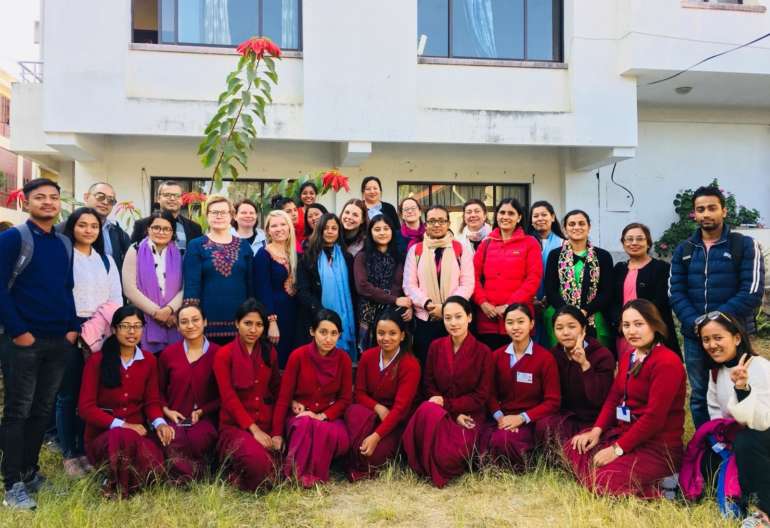Inside the Realms of Education and Practice

I believe everything happens for a reason – and my experience teaches me that it does. I opened my eyes on this beautiful planet Earth on 30 June 1999. Since then, I have always been a girl who dreams and loves turning her dreams into reality. I believe in being happy in the smallest of things. As an only child, valuing and understanding relationships have always been integral to me.
Children must be taught how to think, not what to think
As the day was just beginning, I hurried into my PIE (Partnership in Education) Office. After I finished taking my classes for the day, our college lecturer, Mr Sajal Paudel, called us into a meeting. That was when I first heard about the DVINE Project. That was when it all started.
Coming together as a family with an intensive course
On 26 November 2019, students from the Microbiology, Major Arts and Social Work Department of St Xavier’s College and students from the Patan Nursing Campus participated in the programme, which was divided into two courses: “Community Development” and “Communication and Interaction Competencies”.
I was placed in the Communication and Interaction Competencies course. We learned about medical jargon, sign language, and so on. We were further divided into four groups, where each group was given a medical case.
As we were all from different disciplines, we were instructed to perform a case study through a simulation (acting out). We also discussed old age (ageing) and rape, which are increasingly important issues in the world.
Penny for your thoughts
Communication is a skill that you can learn. It’s like riding a bike or typing. If you’re willing to work at it, you can rapidly improve the quality of every part of life” – Brian Tracy.
We were given insights into sign language through practical group activities. It made us realise how important understanding sign language is when working in various sectors. The simulation helped us approach the behaviour we might have to show in our professional lives.
We had an opportunity to practically examine a situation through the various lenses of our teammates, all working in different sectors. In a developing country like ours, people from different professions hardly work together to solve a single case, which means our diagnosis of a particular case is generally very narrow.
Working on a case for the very first time with a medical practitioner and a microbiologist really allowed me and my team members to discover the potential of working with people from different fields to find a solution for a case. This shows multi-professionalism was the epitome of our course.
Concerning how theory relates to practice, I had always wondered what the gap between these two concepts was, but having worked in a multi-professional group, I realised that the gap between theory and practice is the absence of the incorporation of various ideas and values that comes with the perception of professionals from various sectors.
Text: Adwitiya Gurung
Photo: Group photo from the extensive course: “It’s always the people we meet in this journey called life that makes us a better version of ourselves.”
